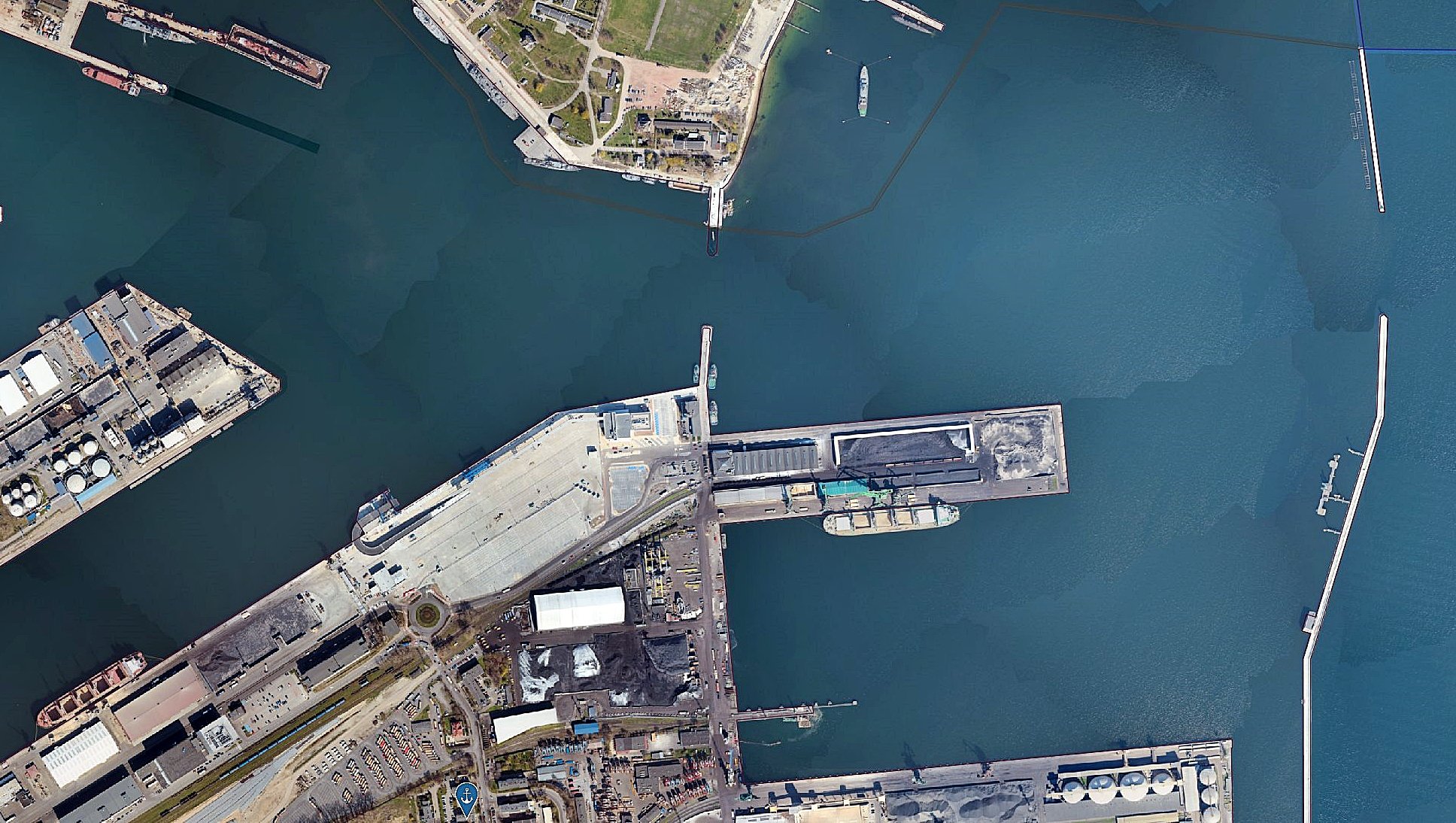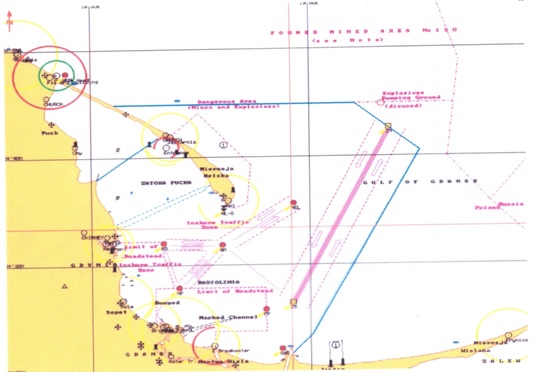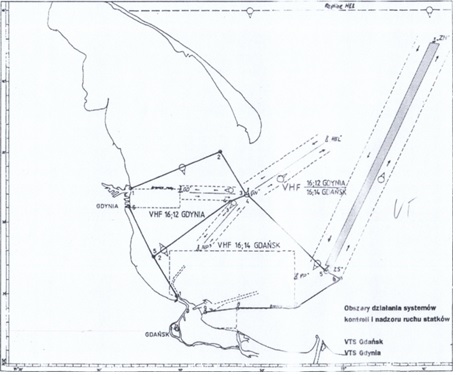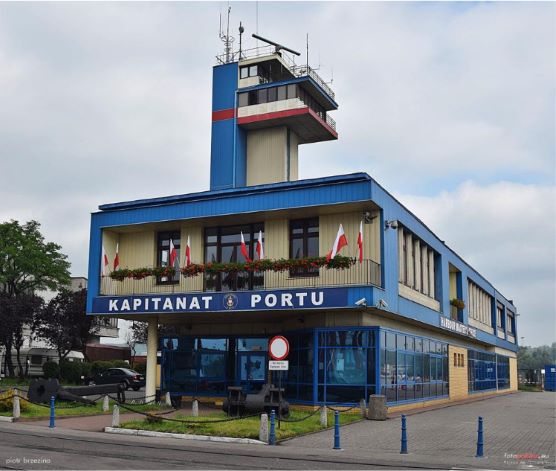
Maritime Traffic Safety Department
Duties of MTSD / VTS
Duties of the Maritime Traffic Safety Department (MTSD) / VTS Centre
General information
The MSTD / VTS Zatoka Gdańska centre is located in Gdynia at 2, Polska Street, on the first floor of the Gdynia Harbor Master's Office. The VTS centre is part of the Maritime Traffic Safety Department (MTSD – in Polish: IRM) - an internal department of the Maritime Office in Gdynia.
The operating procedures of the VTS Zatoka Gdańska centre take into account the guidelines of the International Maritime Organization (IMO) contained in the Resolution IMO A. 857 (20) - Guidelines for Vessel Traffic Services and the IALA recommendations and standards - contained in the VTS Manual.
According to the International Maritime Organization (IMO), a vessel traffic control system is any activity or service, established by a competent authority, aimed at increasing the safety and efficiency of vessel traffic and the protection of the environment. Such a system may have a range of functions - from transmitting information only to an extensive system directing traffic in a port or on fairways. These tasks are carried out by duty services working on a 24-hour basis.
The current Regulations of the Vessel Traffic Control Service (VTS Service) have been specified in Ordinance No. 11 of the Director of the Maritime Office in Gdynia of 17 May 2023 (with later amendments).
The VTS Zatoka Gdańska centre uses the vessel traffic visualization system and the database of vessels calling at the Gulf of Gdańsk ports cooperating with it (details in the "VTS Zatoka Gdańska support systems" tab).
Technical solutions that allow for sending of documents required before the vessel's entry into the port electronically - significantly reduced the amount of information provided by vessels entering the VTS Zatoka Gdańska area.
Radio correspondence Vessel - VTS centre is limited to the necessary minimum:
- vessel’s identification;
- last port of call;
- actual draft of the vessel;
- presence of hazardous and polluting cargo on board;
- total number of people on board;
- the security level of the vessel (if she is subject to ISPS requirements);
- ETA to the pilot position of the port of destination.
As part of the operation of the VTS centre, operators may provide vessels with recommendations, warnings and instructions for specific behavior, if they find that their movement parameters or position endanger the safety of navigation, violate the applicable port regulations or appropriate organization of maritime traffic is necessary.
Tasks performed by the duty services of VTS Zatoka Gdańska
1./ The MSTD / VTS centre in all Polish maritime areas perform:
-
- supervision over the work of foreign and Polish research vessels;
- supervision of specific sea towages;
- supervision and cooperation in actions and situations affecting the protection of the safety of navigation;
- cooperation in the implementation of tasks related to NCAGS (Naval Coordination and Guidance for Shipping) NATO.
2./ The VTS centre performs the tasks of the Regional Contact Point (RCP – in Polish: RKP) in accordance with the provisions of the Protection of Shipping and Seaports Act of 4 September 2008. As part of the tasks (customary procedures, crisis actions), the VTS centre closely cooperates with the Harbour Master's Traffic Services, the Maritime Search and Rescue Service (SAR), the Hydrographic Office of the Navy (BHMW), the Maritime Department of the Border Guard (MOSG), the Center for Maritime Operations of the Polish Navy (COM MW RP), the National Revenue Administration (KAS), port dispatchers, pilot stations, the State Maritime Accident Investigation Commission (PKBWM), Maritime Chambers and other services.
3./ The VTS Zatoka Gdańska centre performs the tasks described in Art. 88 of the Maritime Safety Act in the scope of events which:
- affect the safety of the vessel, such as: collision, fire, grounding, damage or malfunction of the vessel's equipment, flooding or shifting of cargo, damage to the hull or structural elements of the vessel;
- threats to maritime safety such as: damage to equipment that may affect the maneuverability or seaworthiness of the vessel, including affecting the propulsion system, steering gear, power generation system, navigation equipment or communications;
and in accordance with Art. 90 of the above mentioned Act - on vesselss posing a potential danger to navigation or a threat to maritime safety, human safety or the marine environment.
4./ The VTS Zatoka Gdańska centre performs the tasks described in § 9 of the Regulation of the Minister of Transport, Construction and Maritime Economy of 4 December 2012 on the National System of Ship Traffic Monitoring and Information Transmission. (details in the "SafeSeaNet" tab).
5./ The VTS Zatoka Gdańska centre performs the tasks described in Ordinance No. 11 of the Director of the Maritime Office in Gdynia of 17 May 2023 - Regulations of the Vessel Traffic Control Service (VTS Services) (with later amendments).
History of TSS and VTS in the Gulf of Gdańsk
15 April 1980 - a vessel traffic seperation system was introduced in the area of the Gulf of Gdańsk

1 May 1986 – introduced “REPLINE HEL” reporting line (current line 54º45'N). The vessels reported directly to the destination ports of Gdynia and Gdańsk.
9 January 1997 - introduced VTS Gdynia and VTS Gdańsk control systems with limited areas

1 May 2003 - In order to increase the level of safety and security of shipping, the efficiency of vessel traffic, increase the ability to respond to distress on the Gulf of Gdańsk area and to protect the marine environment, the Director of the Maritime Office in Gdynia established the VTS Zatoka Gdańska Traffic Control Service (in its present shape). The VTS Zatoka Gdańska centre provides participants with VTS services and supervises the safety of navigation in the area of its responsibility.
8 October 2007 - VTS Zatoka Gdańska (GDANREP reporting system, TSS Zatoka Gdańska and VTS Center) were accepted and formally adopted at the 83rd session of the IMO Maritime Safety Committee (IMO Resolution MSC.249 (83)).
1 May 2008 - The VTS Zatoka Gdańska (from 0000 UTC) operates in accordance with the decision of the IMO Maritime Safety Committee. From that day on, all vessels (including recreational and fishing) sailing on the area of the Gulf of Gdańsk must comply with regulation 10 of the International Regulations for Preventing Collisions at Sea of 1972.
Operational Center of the Director of the Maritime Office

The operational center of the Director of the Maritime Office is located in the building of the Gdynia Harbor Master's Office (Gdynia, 2 Polska Street).It is the location of the services responsible for the substantive and technical assurance of maritime safety, which include:
- Maritime Traffic Safety Department (MSTD - IRM) together with the VTS centre;
- Shipping Defense Affairs Team;
- Aids to Navigation Department;
- Department of Implementation and Maintenance of IT Systems and Maritime Safety.
The operational center has an appropriate room with the equipment needed for the work of the anti-crisis team.
-
AuthorMichał Tomczyk
-
Creation date11 March 2022
-
Modified23 January 2024 by Michał Tomczyk
